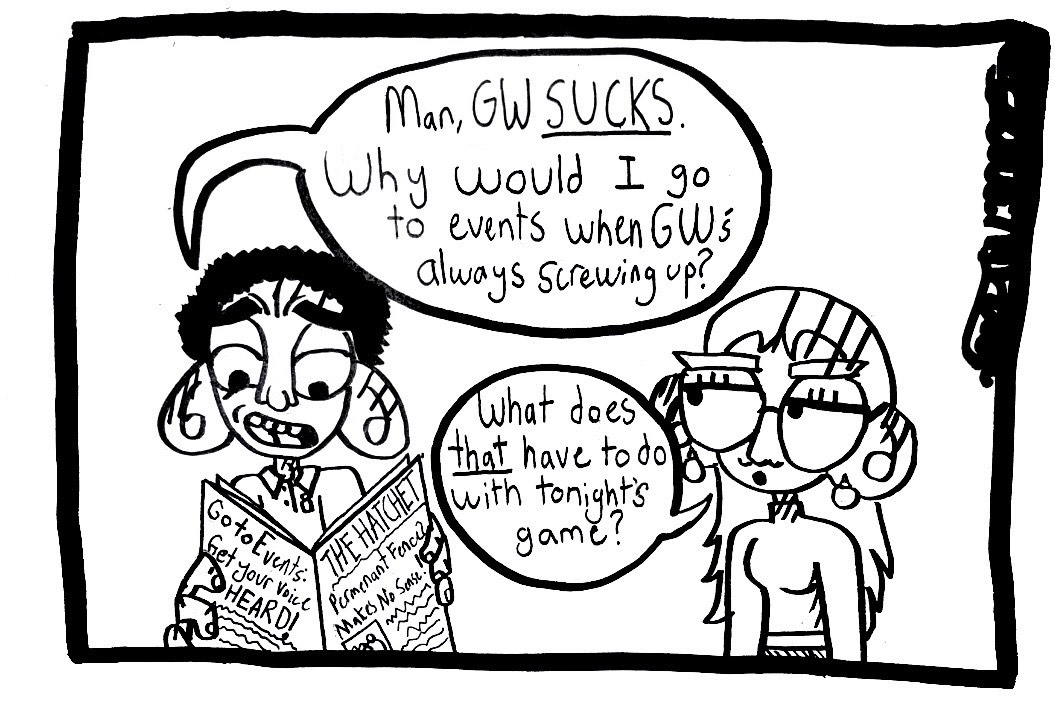Thomas Falcigno is a graduate student in the Graduate School of Political Management. He also serves as a graduate senator representing the College of Professional Studies and as the chairperson pro-tempore in the Student Association Senate.
Last week, we all watched in horror as domestic terrorists attacked the U.S. government. They breached the walls of the U.S. Capitol as both houses of Congress met to count the electoral votes, a sacred and uniquely American tradition. These terrorists were armed with ladders, chemical irritants, zip ties to take hostages and many other types of weaponry.
In addition to being a part-time graduate student, working to attain my master’s degree in GW’s Graduate School of Political Management, I work full time on Capitol Hill, just like many other GSPM students. While I was thankfully working from home that day, many of my colleagues were not.
Last Thursday evening, once the dust had settled, I opened my email to find a letter from University President Thomas LeBlanc. In the first sentence of the letter, he writes, “Like many of you, I watched in horror and dismay as violent protesters stormed the Capitol and tried to prevent the United States Congress from performing its constitutional duty of counting the Electoral College votes from the presidential election.”
While I do not believe LeBlanc had mal intent, his use of the term “violent protesters” to describe the insurrectionists who invaded our Capitol was disgusting, shameful and dismissive of the experiences of those in our GW community who feared for their lives as this attack unfolded. Let me be clear, protesters do not protest with zip ties, ladders, chemical irritants or weapons. This attack was composed of domestic terrorists who sought to upend our democratic republic. LeBlanc owes the GW community, specifically those in our community who work on Capitol Hill, a profound and sincere apology for calling these traitorous individuals “violent protesters.”
As these domestic terrorists laid siege on our temple of American democracy, staffers were forced to flee to safety, having to barricade themselves in whatever secure room was nearby. Journalists put themselves in harm’s way to document the horror taking place inside and outside of the building. Members of Congress were prevented from carrying out their constitutional duties as our government came to a halt. At the time I am writing this, at least five people in the crosshairs of the riot have died, including one U.S. Capitol police officer. All of this occurred as we witnessed the president of the United States celebrate, incite and glorify this violence.
The trauma that has been inflicted on not only hill staffers and members of Congress, but the entire nation, is severe. People I have talked to compare the way they felt on Wednesday to the events of Sept. 11, 2001. Personally, it has been difficult to fully comprehend what this country endured this past week. Even now, it feels like a really bad dream, that this could not have actually happened.
This is not the first time GW has failed to acknowledge reality and the pain of the student community in it’s messaging. Counting my undergraduate years at GW, I have been at the University for more than five years. Time and time again, GW fails to communicate properly with the student community. When events occur that are worth responding to, they release statements that seem like they were written by a lawyer protecting a guilty client. I would urge administrators to learn from this experience. Start communicating with students in a way that it actually seems like you care about our well-being, with messaging that is based on reality and truth that explicitly acknowledges the pain and suffering of members of our community – not this robotic and protectionist language that achieves nothing and leaves students feeling angry and unseen.
On Wednesday, our nation experienced an attack, perpetrated by terrorists – not protesters. As a country, we need to be honest about what happened and that starts within our GW community. Words matter.
Want to respond to this piece? Submit a letter to the editor.


